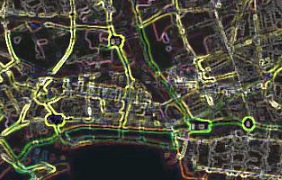Vulnerable Road Users
Bicycling is considered to be environmentally friendly and health promoting, but safety concerns keep some cyclists off the road. Our research aims to answer three primary questions: What knowledge do people have about sharing the road? How does that knowledge impact expectations about sharing the road? What cues or signifiers shape expectations about sharing the road?
Learn MoreFamiliarity and Intuitive Design
Although it is possible to ask people what design elements seem intuitive or natural, this approach may not reveal the underlying sources of intuitive interactions. The cognitive processes supporting intuition most likely occur automatically and are based on implicit representations of previous interactions. I am interested in the contribution of familiarity to this process.
Learn MoreManaging Cognitive Workload
As computing devices become more pervasive, it is increasingly important to understand how to maintain calm and lightweight interactions. To do this, it is critical to consider is how information processing loads interact and how they may impact behavior. Projects in this area have included examinations of "subliminal" stimuli and working memory manipulations.
Learn MoreRecent Projects

Sharing the Road
Expectations about how to share the road could come from knowing the law or from personal experience on the road. The results of this research, presented at AHFE 2019, show that knowledge about the law is limited and motorists and cyclists often do not monitor for the same hazards while on the road.
Presentation
Signs and Lane Markings
How do people interpret signs and road markings that are used to explain how motorists and cyclists should share the road? In this research, presented at the 2020 HFES conference, we show that direct wording ("bicycles take the lane") and painted hazard strips can effectively communicate safe lane placement.
Presentation
Where to Ride in the Lane?
One of the most exciting findings from the research presented at HFES 2020 was that simple road markings can be used to communicate to motorists where a cyclist should ride in the lane. Importantly, motorists understood the markings used in the study without additional training! Fostering a shared representation of road usage is vital.
Infographic
Route Planning
When expert cyclists are planning a route, they rely on friends who bike and groups with cycling experience over software applications. They also note safety concerns but not all consider those concerns when planning a route. This research was presented at the 2020 HCII conference.
Presentation